Хаас за Бахрейн
Ромен Грожан:
The speed you displayed in preseason testing carried through in the season opener in Australia. Can that speed carry into Bahrain, a very different track in a very different environment?
That’s something we’re going to find out. I think the car will be ok in Bahrain. We went well there last year, so hopefully it’ll be another good one for us. The big update for everyone will be in Barcelona, where it will be interesting to see more of the pecking order for the season.
How did the car feel throughout the Australian Grand Prix – from practice and qualifying and on into the race?
It felt very good. I was very happy with the balance, and very happy with the car we had all weekend long.
The midfield has been tight since Rich Energy Haas F1 Team joined Formula One in 2016. But this year it appears tighter than ever, as evidenced by just a half-second separating the seventh-place car from the 15th-place car in the second round of qualifying in Australia. What is your take on this year’s midfield battle?
I think it’s the right battle for Formula One. It’s super exciting to look at the midfield, where the gap is very tight and you never know who’s going to end up on top.
While Mercedes and Scuderia Ferrari are still firmly ensconced in first and second of the Formula One pecking order, how close do you feel Rich Energy Haas F1 Team is to knocking on the door of third-best Red Bull?
I think we’re a bit further away from Red Bull than we were hoping. I’m afraid the gap could open during the year because of the resources they have. We’ll definitely try to give them as hard a time as we can, to please both Rich Energy and ourselves.
For the second straight year, Rich Energy Haas F1 Team leaves Australia with many pointing to the team as being the best of the midfield. How satisfying is that, especially considering you’ve done it with a different rules package compared to last year?
It’s very good. I’m very happy with the work that’s been done during the winter and very proud of everyone at our bases. They nailed the new rules. We’re happy with our car, happy with what we’ve got and we’re looking forward to the season.
Is there a specific portion of the Bahrain International Circuit that is more challenging than other aspects of the track?
Turns one and two are pretty challenging. It’s a busy hairpin with big braking. Then you really want to go early on throttle as you’ve got a long straight line. Turn two is always a bit tricky on the rear end.
Кевин Магнусен: The speed you displayed in preseason testing carried through in the season opener in Australia. Can that speed carry into Bahrain, a very different track in a very different environment?
I really don’t see any reason why not. The tracks are pretty different, with Australia being very bumpy and narrow while Bahrain is very smooth and wide. They also have very different temperatures – that’ll play a role – but I don’t see any reason why the car shouldn’t be working in Bahrain, also.
How did the car feel throughout the Australian Grand Prix – from practice and qualifying and on into the race?
The car felt very good all weekend. We didn’t have to make any drastic changes to the setup or anything. We got through the weekend quite well and managed things well each day.
The midfield has been tight since Rich Energy Haas F1 Team joined Formula One in 2016. But this year it appears tighter than ever, as evidenced by just a half-second separating the seventh-place car from the 15th-place car in the second round of qualifying in Australia. What is your take on this year’s midfield battle?
I think it’s going to be close again, like last year. It’s obviously difficult to say what the battle’s going to be like for the rest of the year, but at least in Australia it was very close, and it looked a lot like last year, maybe even closer.
While Mercedes and Scuderia Ferrari are still firmly ensconced in first and second of the Formula One pecking order, how close do you feel Rich Energy Haas F1 Team is to knocking on the door of third-best Red Bull?
It’s still going to be very difficult to reach Red Bull as they’re already quite a big chunk ahead of us, and they usually evolve and develop quite well over the season, even compared to the two other top teams of Mercedes and Ferrari.
For the second straight year, Rich Energy Haas F1 Team leaves Australia with many pointing to the team as being the best of the midfield. How satisfying is that, especially considering you’ve done it with a different rules package compared to last year?
I’m very proud of what we achieved in Australia. Of course, we’re still not happy as we didn’t get both cars in the points but, nonetheless, we had the potential to have both cars as Romain was very, very fast in qualifying and clearly also had the speed in the race. We would have been P6 and P7. That potential is very satisfying, but we need to complete the job and get both cars in the points. We need to have fewer mistakes if we want to be fighting as best-of-the-rest for the remainder of the year.
What is your favorite part of the Bahrain International Circuit?
Turns 11, 12 and 13 are a good high-speed section of the track. You’re carrying lots of speed into those corners.
Гюнтер Щайнер: The speed your cars displayed in preseason testing carried through in the season opener in Australia. Can that speed carry into Bahrain, a very different track in a very different environment?
Absolutely. Our car showed that it was fast in Barcelona and in Australia, so I don’t foresee anything different for Bahrain.
While Magnussen came away with a sixth-place finish in the Australian Grand Prix, what should have been a seventh-place drive by Grosjean came undone because of a loose wheel. What was the cause and what steps can be taken to prevent a reoccurrence of this issue in future races?
It was one of those things that just happened, and it always seems to happen in Australia. It seems to be a jinxed place for us. It was on the front-left wheel. We had problems last year with it and again this year. It was just an error on the pit stop. Again, you can’t do anything else but to practice, stay calm and just do a good job, like we did all year following Australia. In 20 other races in 2018 we didn’t have an issue on pit stops, so I’m confident we can get out of this one again.
The midfield has been tight since Rich Energy Haas F1 Team joined Formula One in 2016. But this year it appears tighter than ever, as evidenced by just a half-second separating the seventh-place car from the 15th-place car in the second round of qualifying in Australia. What is your take on this year’s midfield battle?
It’s great for Formula One to have a battle like this in the midfield. It would be fantastic if this was at the front – if it could be for first, second and third. Nearly every race could have a different winner. The podium would be filled by more than just three teams. I think it’s very tight. We’re looking forward to the battle because it’s always good to go to the racetrack and have something to fight for.
While Mercedes and Scuderia Ferrari are still firmly ensconced in first and second of the Formula One pecking order, how close do you feel Rich Energy Haas F1 Team is to knocking on the door of third-best Red Bull?
We’ve moved closer, but we’re still a little bit off. Our plan is to be solid in fourth place and fight for being the best-of-the-rest. If something happens to the first three teams, we’re in a good position to maybe get on the podium.
For the second straight year, Rich Energy Haas F1 Team leaves Australia with many pointing to the team as being the best of the midfield. How satisfying is that, especially considering you’ve done it with a different rules package compared to last year?
We’re very satisfied. Credit goes to the whole team. They did a fantastic job to adapt to the new rules and design and produce a car which is competitive.



















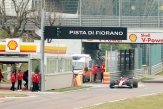
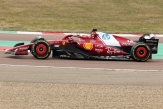
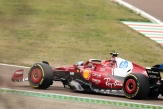
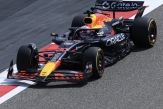
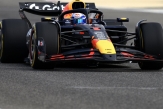
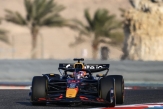

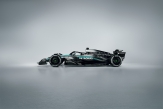
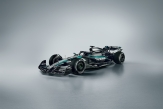
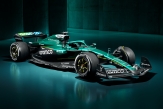
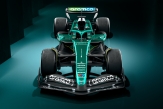
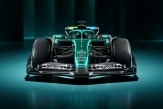
.jpg)
.jpg)
.jpg)

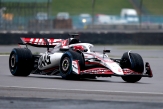

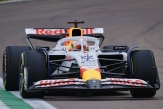
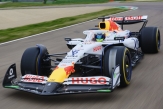
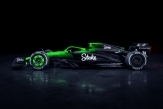
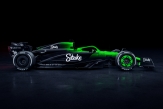

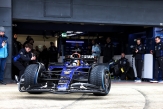
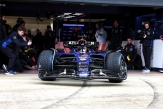
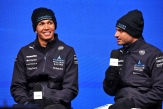

17/11/2025 от Огнян Тенчев (drJeckyll), няма коментари